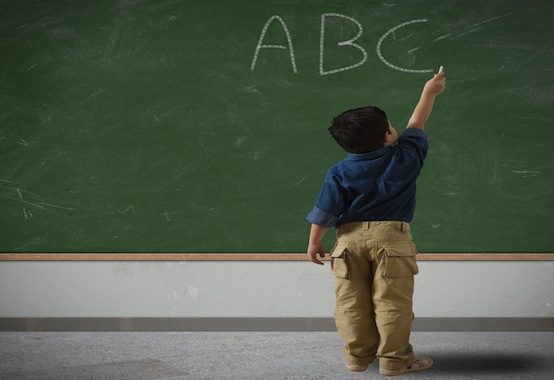Nanny State vs. Nanny School

A Wednesday Atlantic piece considers the amount of “holistic support” schools should offer students. Some education reform advocates believe schools should provide health care, job training, counseling and other extracurricular benefits. But Atlantic editor Emma Green asks, “Is that asking too much?”
Meanwhile, some education reformers protest that the House’s rewrite of the No Child Left Behind Act asks too little. Passed 221-207 by the House on Friday, the Student Success Act dramatically decreased the federal government’s role in education. Politico detailed some of its features:
“The Student Success Act would end the federal requirement that schools make ‘adequate yearly progress,’ letting states set their own progress goals instead. It would block the Education Department from encouraging states to commit to common education standards. And it would end requirements that states preserve their own spending levels on education to receive federal dollars.”
The act’s promoted shift from federal oversight to state accountability complements efforts to institute reform at the local level. But Secretary of Education Arne Duncan called it “a huge step backward,” and said it “marks a retreat from high standards for all students…”
In contrast to the federal model, the “community schools” model works with local businesses, parents, and social workers to provide wide-ranging support for students. Community schools strive to reach beyond the realm of academics and foster student wellbeing. In theory, this helps remove external inhibitions (like family conflict, for instance) that keep students from educational excellence. However, actress and education activist Cynthia Nixon told the Atlantic that too often “We expect the school to be the mother, the father, the guidance counselor, the doctor, the nurse, the cook, the police officer.”
The federal model, by espousing broad national standards and regulation, serves as a “nanny” to school districts. It attempts to change education with a top-down approach: whether by bombarding local schools with national regulations, or by strongly “encouraging” the adoption of national standards. The community model, meanwhile, can also fall prey to a detrimental “nannying” initiative. It does have a more specific, local approach. This is one of its strengths. But when schools try to “educate, cure, and counsel, protect… and prepare” students, they are simply attempting too much.
Amy Ellen Schwartz, director of the NYU Institute for Education and Social Policy, told the Atlantic she fears community schools could actually worsen inequality and prevent diversification:
“The problem with community schooling can be that if ties to the community get too tight, then you may be exacerbating some of these issues. It works really well in middle-income and high-income neighborhoods, but poorly in low-income neighborhoods — you go to a local school that isn’t so fabulous, and so you’re sealing everything in a package that exacerbates inequality. I think it’s very promising — we just don’t want to overdo it.”
Schwartz is right that local schools cannot fix issues of inequality or conjure up strong communities. But at the same time, community problems cannot be fixed through ignorance or separation. How does Schwartz intend to address the problem of the low-income neighborhood that “isn’t so fabulous?” Wherever they attend school, students will inevitably return home to that same neighborhood. The local school must consider ways to confront, not exacerbate, inequality.
In light of poor test results, family conflict, community crime, and all other problems besetting students, it is natural that sympathetic lawmakers and reformers want to help. However, their attempts to “nanny” students, whether through federal oversight or expansive extra-curricular programs, cannot fix these problems. As one commenter on a previous “community schools” article noted, the real solutions to such issues, if there are any, “are at home.” Community schools cannot suspend parental rights or demand domestic reform. Similarly, state attempts to “nanny” schools are also limited. They cannot observe the needs of specific students or the incompetence of various teachers. These issues must be addressed locally and individually.